Yujia Zheng
A Survey of Vibe Coding with Large Language Models
Oct 14, 2025Abstract:The advancement of large language models (LLMs) has catalyzed a paradigm shift from code generation assistance to autonomous coding agents, enabling a novel development methodology termed "Vibe Coding" where developers validate AI-generated implementations through outcome observation rather than line-by-line code comprehension. Despite its transformative potential, the effectiveness of this emergent paradigm remains under-explored, with empirical evidence revealing unexpected productivity losses and fundamental challenges in human-AI collaboration. To address this gap, this survey provides the first comprehensive and systematic review of Vibe Coding with large language models, establishing both theoretical foundations and practical frameworks for this transformative development approach. Drawing from systematic analysis of over 1000 research papers, we survey the entire vibe coding ecosystem, examining critical infrastructure components including LLMs for coding, LLM-based coding agent, development environment of coding agent, and feedback mechanisms. We first introduce Vibe Coding as a formal discipline by formalizing it through a Constrained Markov Decision Process that captures the dynamic triadic relationship among human developers, software projects, and coding agents. Building upon this theoretical foundation, we then synthesize existing practices into five distinct development models: Unconstrained Automation, Iterative Conversational Collaboration, Planning-Driven, Test-Driven, and Context-Enhanced Models, thus providing the first comprehensive taxonomy in this domain. Critically, our analysis reveals that successful Vibe Coding depends not merely on agent capabilities but on systematic context engineering, well-established development environments, and human-agent collaborative development models.
SmartCLIP: Modular Vision-language Alignment with Identification Guarantees
Jul 29, 2025Abstract:Contrastive Language-Image Pre-training (CLIP)~\citep{radford2021learning} has emerged as a pivotal model in computer vision and multimodal learning, achieving state-of-the-art performance at aligning visual and textual representations through contrastive learning. However, CLIP struggles with potential information misalignment in many image-text datasets and suffers from entangled representation. On the one hand, short captions for a single image in datasets like MSCOCO may describe disjoint regions in the image, leaving the model uncertain about which visual features to retain or disregard. On the other hand, directly aligning long captions with images can lead to the retention of entangled details, preventing the model from learning disentangled, atomic concepts -- ultimately limiting its generalization on certain downstream tasks involving short prompts. In this paper, we establish theoretical conditions that enable flexible alignment between textual and visual representations across varying levels of granularity. Specifically, our framework ensures that a model can not only \emph{preserve} cross-modal semantic information in its entirety but also \emph{disentangle} visual representations to capture fine-grained textual concepts. Building on this foundation, we introduce \ours, a novel approach that identifies and aligns the most relevant visual and textual representations in a modular manner. Superior performance across various tasks demonstrates its capability to handle information misalignment and supports our identification theory. The code is available at https://github.com/Mid-Push/SmartCLIP.
Position: Mechanistic Interpretability Should Prioritize Feature Consistency in SAEs
May 26, 2025Abstract:Sparse Autoencoders (SAEs) are a prominent tool in mechanistic interpretability (MI) for decomposing neural network activations into interpretable features. However, the aspiration to identify a canonical set of features is challenged by the observed inconsistency of learned SAE features across different training runs, undermining the reliability and efficiency of MI research. This position paper argues that mechanistic interpretability should prioritize feature consistency in SAEs -- the reliable convergence to equivalent feature sets across independent runs. We propose using the Pairwise Dictionary Mean Correlation Coefficient (PW-MCC) as a practical metric to operationalize consistency and demonstrate that high levels are achievable (0.80 for TopK SAEs on LLM activations) with appropriate architectural choices. Our contributions include detailing the benefits of prioritizing consistency; providing theoretical grounding and synthetic validation using a model organism, which verifies PW-MCC as a reliable proxy for ground-truth recovery; and extending these findings to real-world LLM data, where high feature consistency strongly correlates with the semantic similarity of learned feature explanations. We call for a community-wide shift towards systematically measuring feature consistency to foster robust cumulative progress in MI.
Type Information-Assisted Self-Supervised Knowledge Graph Denoising
Mar 13, 2025Abstract:Knowledge graphs serve as critical resources supporting intelligent systems, but they can be noisy due to imperfect automatic generation processes. Existing approaches to noise detection often rely on external facts, logical rule constraints, or structural embeddings. These methods are often challenged by imperfect entity alignment, flexible knowledge graph construction, and overfitting on structures. In this paper, we propose to exploit the consistency between entity and relation type information for noise detection, resulting a novel self-supervised knowledge graph denoising method that avoids those problems. We formalize type inconsistency noise as triples that deviate from the majority with respect to type-dependent reasoning along the topological structure. Specifically, we first extract a compact representation of a given knowledge graph via an encoder that models the type dependencies of triples. Then, the decoder reconstructs the original input knowledge graph based on the compact representation. It is worth noting that, our proposal has the potential to address the problems of knowledge graph compression and completion, although this is not our focus. For the specific task of noise detection, the discrepancy between the reconstruction results and the input knowledge graph provides an opportunity for denoising, which is facilitated by the type consistency embedded in our method. Experimental validation demonstrates the effectiveness of our approach in detecting potential noise in real-world data.
Synthetic Poisoning Attacks: The Impact of Poisoned MRI Image on U-Net Brain Tumor Segmentation
Feb 06, 2025Abstract:Deep learning-based medical image segmentation models, such as U-Net, rely on high-quality annotated datasets to achieve accurate predictions. However, the increasing use of generative models for synthetic data augmentation introduces potential risks, particularly in the absence of rigorous quality control. In this paper, we investigate the impact of synthetic MRI data on the robustness and segmentation accuracy of U-Net models for brain tumor segmentation. Specifically, we generate synthetic T1-contrast-enhanced (T1-Ce) MRI scans using a GAN-based model with a shared encoding-decoding framework and shortest-path regularization. To quantify the effect of synthetic data contamination, we train U-Net models on progressively "poisoned" datasets, where synthetic data proportions range from 16.67% to 83.33%. Experimental results on a real MRI validation set reveal a significant performance degradation as synthetic data increases, with Dice coefficients dropping from 0.8937 (33.33% synthetic) to 0.7474 (83.33% synthetic). Accuracy and sensitivity exhibit similar downward trends, demonstrating the detrimental effect of synthetic data on segmentation robustness. These findings underscore the importance of quality control in synthetic data integration and highlight the risks of unregulated synthetic augmentation in medical image analysis. Our study provides critical insights for the development of more reliable and trustworthy AI-driven medical imaging systems.
Causal Representation Learning from Multimodal Biological Observations
Nov 10, 2024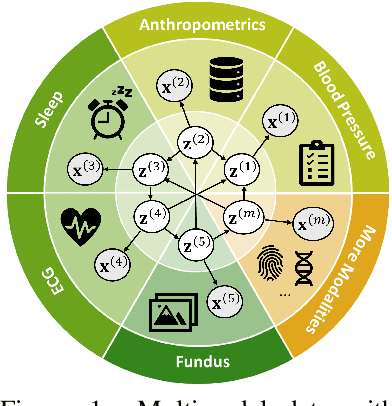

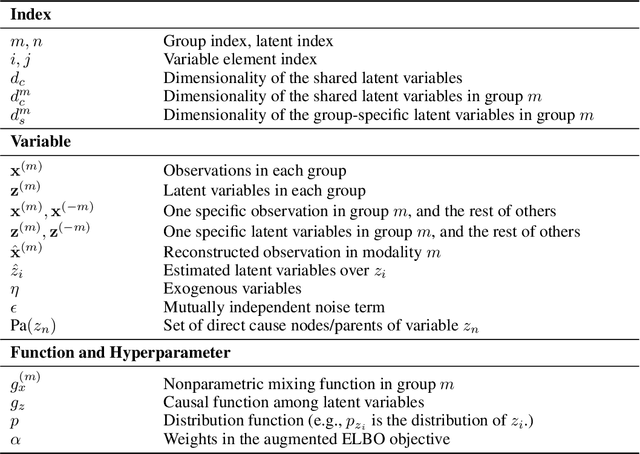
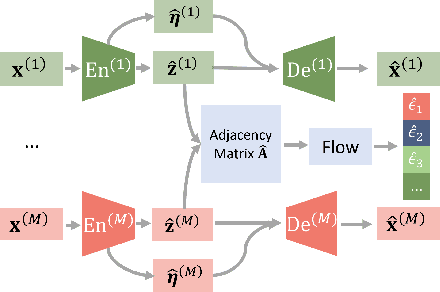
Abstract:Prevalent in biological applications (e.g., human phenotype measurements), multimodal datasets can provide valuable insights into the underlying biological mechanisms. However, current machine learning models designed to analyze such datasets still lack interpretability and theoretical guarantees, which are essential to biological applications. Recent advances in causal representation learning have shown promise in uncovering the interpretable latent causal variables with formal theoretical certificates. Unfortunately, existing works for multimodal distributions either rely on restrictive parametric assumptions or provide rather coarse identification results, limiting their applicability to biological research which favors a detailed understanding of the mechanisms. In this work, we aim to develop flexible identification conditions for multimodal data and principled methods to facilitate the understanding of biological datasets. Theoretically, we consider a flexible nonparametric latent distribution (c.f., parametric assumptions in prior work) permitting causal relationships across potentially different modalities. We establish identifiability guarantees for each latent component, extending the subspace identification results from prior work. Our key theoretical ingredient is the structural sparsity of the causal connections among distinct modalities, which, as we will discuss, is natural for a large collection of biological systems. Empirically, we propose a practical framework to instantiate our theoretical insights. We demonstrate the effectiveness of our approach through extensive experiments on both numerical and synthetic datasets. Results on a real-world human phenotype dataset are consistent with established medical research, validating our theoretical and methodological framework.
Identifying Selections for Unsupervised Subtask Discovery
Oct 28, 2024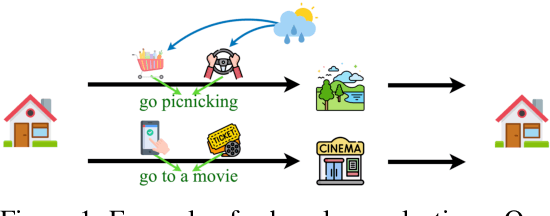


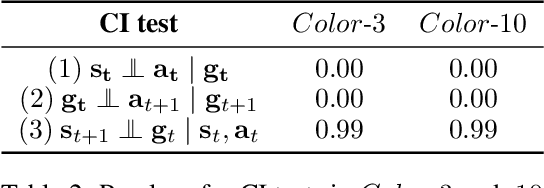
Abstract:When solving long-horizon tasks, it is intriguing to decompose the high-level task into subtasks. Decomposing experiences into reusable subtasks can improve data efficiency, accelerate policy generalization, and in general provide promising solutions to multi-task reinforcement learning and imitation learning problems. However, the concept of subtasks is not sufficiently understood and modeled yet, and existing works often overlook the true structure of the data generation process: subtasks are the results of a $\textit{selection}$ mechanism on actions, rather than possible underlying confounders or intermediates. Specifically, we provide a theory to identify, and experiments to verify the existence of selection variables in such data. These selections serve as subgoals that indicate subtasks and guide policy. In light of this idea, we develop a sequential non-negative matrix factorization (seq- NMF) method to learn these subgoals and extract meaningful behavior patterns as subtasks. Our empirical results on a challenging Kitchen environment demonstrate that the learned subtasks effectively enhance the generalization to new tasks in multi-task imitation learning scenarios. The codes are provided at https://anonymous.4open.science/r/Identifying\_Selections\_for\_Unsupervised\_Subtask\_Discovery/README.md.
Causality for Large Language Models
Oct 20, 2024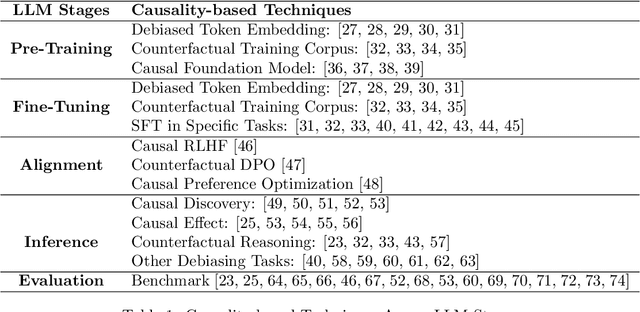
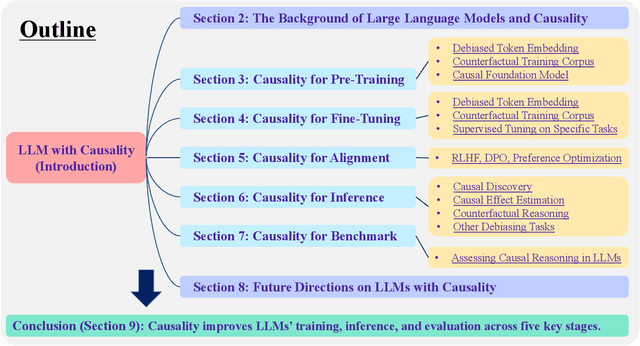

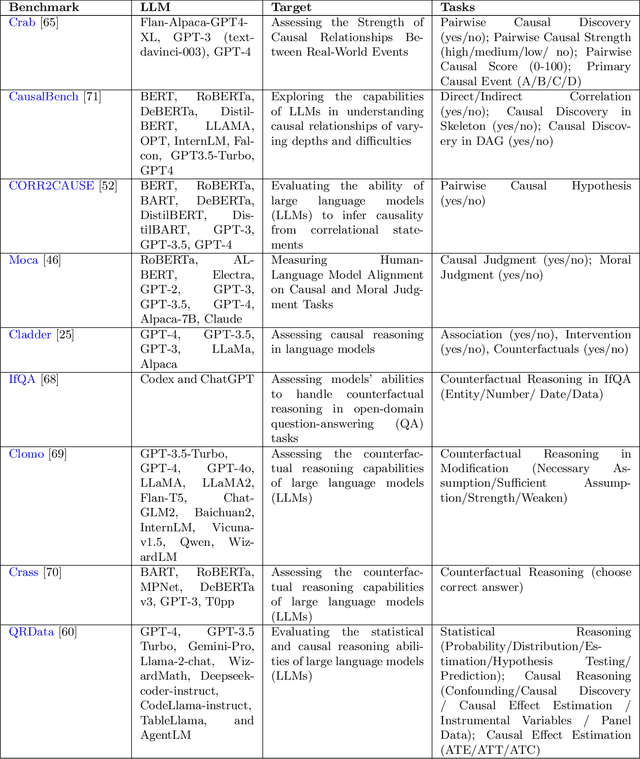
Abstract:Recent breakthroughs in artificial intelligence have driven a paradigm shift, where large language models (LLMs) with billions or trillions of parameters are trained on vast datasets, achieving unprecedented success across a series of language tasks. However, despite these successes, LLMs still rely on probabilistic modeling, which often captures spurious correlations rooted in linguistic patterns and social stereotypes, rather than the true causal relationships between entities and events. This limitation renders LLMs vulnerable to issues such as demographic biases, social stereotypes, and LLM hallucinations. These challenges highlight the urgent need to integrate causality into LLMs, moving beyond correlation-driven paradigms to build more reliable and ethically aligned AI systems. While many existing surveys and studies focus on utilizing prompt engineering to activate LLMs for causal knowledge or developing benchmarks to assess their causal reasoning abilities, most of these efforts rely on human intervention to activate pre-trained models. How to embed causality into the training process of LLMs and build more general and intelligent models remains unexplored. Recent research highlights that LLMs function as causal parrots, capable of reciting causal knowledge without truly understanding or applying it. These prompt-based methods are still limited to human interventional improvements. This survey aims to address this gap by exploring how causality can enhance LLMs at every stage of their lifecycle-from token embedding learning and foundation model training to fine-tuning, alignment, inference, and evaluation-paving the way for more interpretable, reliable, and causally-informed models. Additionally, we further outline six promising future directions to advance LLM development, enhance their causal reasoning capabilities, and address the current limitations these models face.
SciSafeEval: A Comprehensive Benchmark for Safety Alignment of Large Language Models in Scientific Tasks
Oct 02, 2024



Abstract:Large language models (LLMs) have had a transformative impact on a variety of scientific tasks across disciplines such as biology, chemistry, medicine, and physics. However, ensuring the safety alignment of these models in scientific research remains an underexplored area, with existing benchmarks primarily focus on textual content and overlooking key scientific representations such as molecular, protein, and genomic languages. Moreover, the safety mechanisms of LLMs in scientific tasks are insufficiently studied. To address these limitations, we introduce SciSafeEval, a comprehensive benchmark designed to evaluate the safety alignment of LLMs across a range of scientific tasks. SciSafeEval spans multiple scientific languages - including textual, molecular, protein, and genomic - and covers a wide range of scientific domains. We evaluate LLMs in zero-shot, few-shot and chain-of-thought settings, and introduce a 'jailbreak' enhancement feature that challenges LLMs equipped with safety guardrails, rigorously testing their defenses against malicious intention. Our benchmark surpasses existing safety datasets in both scale and scope, providing a robust platform for assessing the safety and performance of LLMs in scientific contexts. This work aims to facilitate the responsible development and deployment of LLMs, promoting alignment with safety and ethical standards in scientific research.
Causal Temporal Representation Learning with Nonstationary Sparse Transition
Sep 05, 2024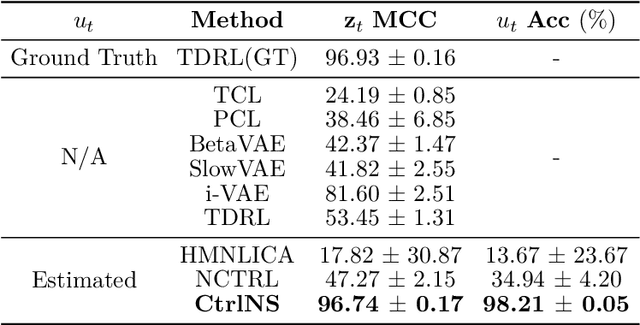
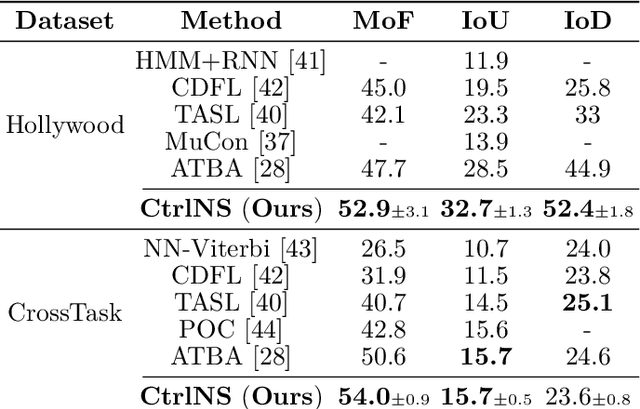
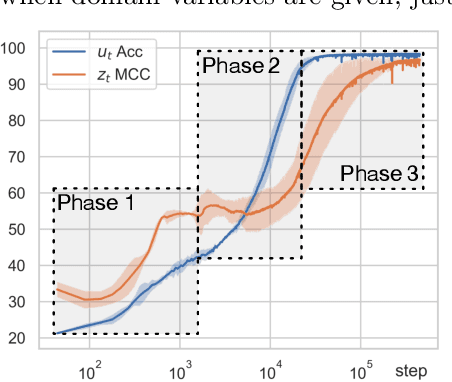
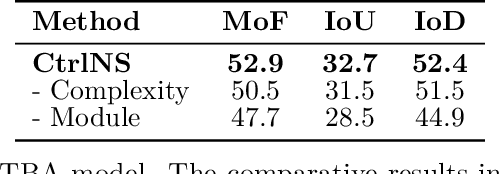
Abstract:Causal Temporal Representation Learning (Ctrl) methods aim to identify the temporal causal dynamics of complex nonstationary temporal sequences. Despite the success of existing Ctrl methods, they require either directly observing the domain variables or assuming a Markov prior on them. Such requirements limit the application of these methods in real-world scenarios when we do not have such prior knowledge of the domain variables. To address this problem, this work adopts a sparse transition assumption, aligned with intuitive human understanding, and presents identifiability results from a theoretical perspective. In particular, we explore under what conditions on the significance of the variability of the transitions we can build a model to identify the distribution shifts. Based on the theoretical result, we introduce a novel framework, Causal Temporal Representation Learning with Nonstationary Sparse Transition (CtrlNS), designed to leverage the constraints on transition sparsity and conditional independence to reliably identify both distribution shifts and latent factors. Our experimental evaluations on synthetic and real-world datasets demonstrate significant improvements over existing baselines, highlighting the effectiveness of our approach.
 Add to Chrome
Add to Chrome Add to Firefox
Add to Firefox Add to Edge
Add to Edge